
Lamp Shades: The purpose of a lamp shade
Search
See also our main lamp shade article for more lamp shade topics.
What is a lamp shade

A lamp shade is a kind of shield for your eyes. Lamp shades wrap around a light bulb so that you don't have to look directly at the bright light bulb. A lampshade "shades" your view by placing material in-between you and the light bulb. This material diffuses and reflects light, reducing the glare and directing the light.
The aim of a lampshade isn't to completely block the light, because the lamp is designed to brighten up your room. But it is designed to partially reflect, diffuse and filter the light, so that the light is softened and not so harsh.
Light escapes from either end of the lamp shade to light up the surrounding area. Lamp shades therefore convert direct light into indirect and more ambient light.
Why we use lamp shades
Light bulbs can be very bright
The most intense light is close to the bulb's surface. The filament or light technology inside the bulb is sending out intense amounts of light which are very concentrated. This concentrated light is very bright when all of the light is in one place, before it spreads out.
This concentration of light forms a kind of "hot-spot" of brightness. Looking at this concentrated brightness is uncomfortable and harsh on the eyes, especially when the light bulbs are stronger.
Lamp shades were invented to shield your eyes
Lamp shades help to soften and channel the light. Depending on the lampshade material, some of the light may pass through the lampshade itself in a diffused way, while some of the light will be reflected out of the ends. In other materials such as with hard-backed or lined lamp shades, a vast majority of the light is reflected and almost no light passes through the shade material.
This is part of the reason why lamp shades have an opening at both ends. The light has to go somewhere. So while the light is partially blocked by the shade surface at the sides, it is also allowed to escape through the top and bottom of the shade. This is why lamp shades mostly have a "cylinder" shape, like a tube, with openings at both ends to let the light and heat out.
Lamp shades also manage bulb heat
Light bulbs, as with any electrical items, convert some of the energy into heat. A lampshade must have an opening at both ends to let the heat out. Heat tends to rise upward, which pulls air up from below.
So as the light bulb heats up, the heat rises up and escapes out of the top of the lamp shade. This pulls the air upward from below and draws cooler air in from the bottom of the lamp shade, helping to keep the system cool.
The shape of the lamp shade matters

This funneling and focusing of light out of the ends of the lamp shade becomes a feature. Different shapes of lamp shades can spread the light out or focus it, depending on the shape of the shade.
A lampshade with flat sides, such as a cylinder lampshade, will send light upward and downward in a fairly narrow and equal cone shape. Lamp shades with a smaller opening at the top and larger at the bottom, will spread the light below the shade over a much wider area.
It then becomes useful to use different shaped lampshades in different situations, or different areas of the room, and for different purposes. It depends whether you will be positioned below or next to the shade, how much spread of light you want, and whether the shade should diffuse or reflect the light.
Different shade shapes and materials will produce different effects, different shapes of light output, and a different atmosphere in the room.
The benefits of a lampshade

The main benefit of a lampshade
A lamp shade helps to reduce glare by blocking some of the light. A side effect is that the light becomes more diffused, softer and more ambient. In some cases, no light is allowed to pass through the shade itself at all, and more of the light is reflected and dispersed in different directions.
On the flipside, this means that light is funneled out of the ends of the shade. This is particularly useful for focusing and aiming the light for practical purposes. As light bounces around inside the shade, the angles of the light rays reflect off the sides of the lamp shade and out through the bottom.
A lamp shade with a wider base increases the angle between the bulb and the bottom edges of shade, casting light over a wider area. In other cases, a narrower or more cylindrical lampshade will focus the light into a smaller area.
This can be useful for example where a shade is used over a table as in a drum shade pendant, or in table lamps where only the area around around the lamp should be lit. If you need the light to reach further, either position it higher or use a shade with a wider bottom.
Lamp shades can come in a variety of shapes, sizes, colors, textures and patterns, using a variety of materials. The lamp shade can coordinate with the furniture and decorating style in your room, as well as acting as either a background element or a colorful accent.
The issue of light bulb heat

Light bulbs can radiate heat
When electricity passes through any electrical device, some of the energy is converted into heat. In the case of light bulbs this is especially true. Traditional incandescent light bulbs use a tungsten filament inside the bulb.
When electricity passes through the filament or other lighting technology, energy is released as light. But at the same time, some of the energy is released as heat. In a traditional incandescent bulb, as much as 90% of the energy is given off as heat rather than light.
Light bulb heat has to be carefully managed
A light bulb is constantly outputting heat, so it needs to escape from a confined area. Heat cannot be allowed to build up around the bulb or inside the shade because it could cause a fire.
When the light bulb is bare, without a shade, this isn't much of a problem because the heat is absorbed into the surrounding air. The air is free to flow around the bulb in all directions. But when a lampshade is added around the bulb, care has to be taken to prevent heat from building up.
The lamp shade must not be too close to the light bulb
If the light bulb is hot, the lampshade itself could heat up and catch fire. At least a few inches minimum is needed between the bulb and the shade surface for safety. This allows the heat to move into the air and pass out of the lampshade.
This isn't as much of a problem with compact fluorescent bulbs and LED bulbs, because the amount of heat they produce is far less. They are much more efficient at converting energy into light, so do not release as much heat. But they still need some room around the bulb to remove some heat, because all types of bulbs produce at least some heat.
Do not cover the lamp shade openings!
Make sure you never cover the top opening of a lampshade. It is there for a reason and is specifically designed to allow heat to escape, creating a gentle funnel of upward rising hot air.
If the top of the shade is covered, hot air will build up inside the top of the shade and heat up whatever is covering the opening, including causing the lamp shade material itself to heat up. This could cause it to become hot and catch fire, which is a safety risk. Even decorative fabrics and light materials have this risk, so it is best to allow the top of the shade to remain uncovered.
The outside surface of the lamp shade can be decorated but make sure you always leave the top of the lamp shade open. The bottom should also remain open to allow the air to flow through.
Diffusing glare from light bulbs
Glare is produced when the brightness of a light bulb is much higher than the brightness of the rest of the room. Looking directly at a bulb is harsh on the eyes and too intense for comfort. The lamp shade material can help to diffuse and filter the light so that it does not appear so focused.
The lampshade is usually positioned so that a person's eyesight looks out toward the sides of the lampshade, rather than at the light bulb. This is the main line of sight.
There may be still some suggestion of a bright spot near the center of the lamp, but it will appear far less harsh. Light from the bulb will light up the lampshade and some of the light will pass through it. Overall the intensity of the direct light will be greatly reduced.
Use a diffuser with drum pendants

Note that if you are using a lamp shade with a ceiling light fixture such as a drum pendant, consider whether people will be able to look up at the pendant from below and see the bulb. If so, this could be harsh on the eyes. To alleviate this you can add a diffuser to the bottom of the shade.
The diffuser covers most of the opening but allows some room for airflow, and is like a frosted lightweight material designed to scatter light. This shields your eyes from the harsh glare of the light bulb.
The color of the lamp shade matters

Lamp shade color affects the color of the light
If for example the lampshade is red, and light passes through it or reflects off of it, this means it is absorbing green and blue wavelengths (for example) and only allowing red wavelengths to be reflected.
This will seem to "color" the light, causing the light to become redder. In other words, all wavelengths except red are allowed to pass through. This will light up the room with a more reddish glow, and this red light will affect the color of all objects in the room (see color rendering index CRI also). For ideal visibility and proper coloring of the room, a warm white or white light is preferred.
If you don't want color-tinted light and objects
A neutral white, off-white or beige shade reflects the most color wavelengths and allows the color of objects to remain truer to their natural color. The stronger the colors in the shade, the more it will influence and filter the light color.
This is less true of course if the lampshade features a separate lining designed to reflect the most light internally. Such linings are usually white, silver or gold, and can help to keep the light color whiter or warmer, while allowing the outside material of the shade to remain colorful.
Consider a lined lamp shade
When a lamp shade has a separate lining, such as with a "hard back shade" made from a more solid material, or an extra layer of white/reflective material inside the shade, less light will pass through or light up the shade itself.
More of the light will become reflected out of the ends of the lamp shade, and far less will be filtered or colored passing through the shade material. There is a tradeoff between keeping the light closer to the color you want, and having freedom to choose a design of shade color that matches your surroundings. If the outside color of the lampshade material is quite different to the color of the light that you want the lamp to emit, you should opt for a lined shade.
When the lamp shade color is dark

Dark-colored lamp shades such as black lamp shades ideally should have a reflective or white lining - such as with gold-lined black lamp shades, because otherwise the black will absorb a lot of light. A material appears black because it does not reflect (ie it absorbs) almost all wavelengths, which somewhat defeats the purpose of the lamp. Look for lined lamp shades when choosing darker colors.
Where to use a lamp shade
Different shapes of lamp shade may be more appropriate in different locations. When the shade is wider at the bottom than the top, light will spread out much more below the lamp, covering a wider area.
When the shade is more vertical, like a cylindrical tube, the light will more equally leave the top and bottom of the shade. A cylinder or "drum" lamp shade will spread the focused light over a narrower area than an empire or bell shade.
Note also that the shape of the light coming out of the lamp shade and shining onto the walls and ceiling is affected by the shape of the lamp shade. It's based on the angles between the light bulb and top and bottom rim of the shade.
If your table lamp is located next to a seating area
When placing a lamp such as a table lamp on a side table, a lamp shade with more sloped sides might be a better choice. With slanted sides, such as an "empire shade" shape, light can spread out further around the lamp and light up the lap of the person sitting next to it. This allows the light to reach across, covering a wider area.
If your table lamp is located in the background of the room
When placing lamps in the background, such as in the corner or side of the room away from seating areas, the lamp is being used more for ambient light than for practical purposes. It doesn't matter as much the shape of the shade.
It may be preferable to use a drum shade with more vertical sides, or a rectangular shade. The light will emit more equally up and down and produce more of an ambient light.
Note that the more light moves upward, ie as the top opening of the shade is larger, it will reflect more light off the ceiling, creating more of an ambient background light rather than a focused task light. Table lamps with empire or coolie shades, ie with sloped sides, will spread more light downwards and around the local area, which will keep the light below the lamp.
Floor lamp shades are a little different

Floor lamp are taller lamps and are usually larger in proportion. They may feature brighter light bulbs. Since the light source is higher up, and since the shade is generally larger, it doesn't need to be quite so sloped on the sides to spread the light out. A larger shade increases the angle between the bulb and the bottom rim of the shade, spreading the light out more.
A floor lamp shade may have a slight slant at the sides for aesthetic reasons, because it looks more refined, and less as a need for directing the light. Light will generally emit mostly down and partly up.
The wider shade on a tall standing floor lamp will shine down and spread out further due to the height from the floor, and will light up the area below. Remember that light generally spreads out over a wider area the further you get from the light source. A floor lamp is ideally placed behind or next to a seating area, or in the corner of a room.
When using a drum pendant light fixture
A drum pendant features a lamp shade, and this will be hung from the ceiling. The shade will cast some of the light upward for ambient background light, and some of the light downward to light up the area below.
A drum shade is ideal because it focuses the light onto the table or furniture below while also reflecting some light off the ceiling for ambience. If the light were to spread out too far to the sides, it may begin to shine into the eyes of people sitting there. And since it is often used over a table or seating area, the flat sides of the shade help to narrow the "beam" of light and focus it on a smaller area.
A chandelier can use lamp shades too

While candelabras often use exposed candle-style bulbs, many chandeliers will cover the bulbs with small mini lampshades. Their shape doesn't largely matter because the shades are so small, so their shape doesn't make much difference to the light.
The shape of chandelier shades is more for decorative appeal, and often are empire, bell or cylinder shades. In general though, a shade with a sloped side will reflect more of the light downward.
The combined collection of chandelier lamp shades will emit mostly an ambient light around the light fixture in various directions. So placement of the chandelier is more important than the individual shades.
The shape of light from a lamp shade

Different shaped lampshades influence the light from the light bulb. The bulb generally emits light in almost all directions, although mostly upwards and out to the sides. A pendant light might have the bulb mounded downwards, so that light shines down and outward onto a surface.
Light itself travels in a straight line, but when it collides with the lamp shade surface it is partly absorbed, partly reflected, and partly passes through the shade. The angle of the sides of the shade can influence where the majority of the light goes when it bounces off the shade.
Cylinder lamp shades with vertical sides
Cylinder shades are also called drum shades. These allow roughly equal amounts of light to shine out of the top and bottom of the shade.
The angle between the light bulb and the top and bottom edges of the shade will determine what kind of "shape" the light is that comes out of the shade. These shapes are usually "cone" like, spreading out wide as you go further from the light source. In the case of square or rectangular shades, the light shape will be more like a pyramid.
The strongest light will shine directly from the bulb out the top and bottom of the shade without touching the shade. This is more direct light. A shade with a more reflective liner may bounce more light out from inside the shade, but the strongest light will be the light coming straight from the light bulb onto objects.
An empire lamp shade or a floor lamp shade
Empire and floor shades have more sloped sides. This means that in general the opening for direct light rays to escape from the top of the shade is narrower. This will cast a narrower beam of light out of the top of the shade producing a smaller circle on the ceiling.
At the same time, the bottom of the shade is wider. Much more light will escape further out of the bottom of the shade and spread over a wider area. The angle between the light bulb and the bottom edge of the lampshade is wider, which disperses or "thins out" the light over a wider area.
A wider spread of light may appear less bright
The wider the area the light spreads over, the dimmer the light may appear to be overall because it is more dispersed. Focused light appears brighter because it is more concentrated. The bulb will be outputting the same amount of light in both cases, but a spread-out light has less concentration so it appears less intense.
Think of the lamp shade as a way to focus, narrow, or disperse light into a "beam", like with a flashlight or torch. It might be desirable to use a lampshade with a wider bottom opening in order to deliberately spread the light out over a wider area, so that it is generally more diffused and softer and less intense.
If you want a brighter light you either will need a brighter light bulb or a narrower shade opening. Or as an alternative, a smaller lamp shade with a smaller opening, but this may affect the proportions of the lamp.
A coolie shade with a flattened slope

A coolie lamp shade is an example of a lampshade with a very small top opening and a very wide bottom opening. Not very much light escapes out of the top except for a narrow beam. Much more light will reflect and spread out of the bottom of the shade, over a wider area.
The light will be more spread out which will soften the light and make it generally dimmer in any given location. This can produce more ambient background light and can help light to reach further away areas, but the tradeoff is that the light may not seem quite as bright as it travels further from the light source.
Of course, you can counteract this dispersal of brightness by using a brighter light bulb, but make sure to stay within the maximum wattage of the lamp.
A brief history of lamp shades
Lamp shades have been around for centuries, evolving alongside lighting technology and interior design trends. The earliest lamp shades date back to ancient civilizations, where simple covers made from natural materials like animal hides, pottery, and woven reeds were used to soften the light from oil lamps and candles. These early shades had a practical purpose. They helped to reduce the harsh glare of light and protected eyes from the direct flame.
By the 17th and 18th centuries, lamps and their shades became more decorative. In Europe, the introduction of glass-blown oil lamps saw a rise in glass shades that added elegance and color to a room. These shades often featured intricate designs and patterns, and they were prized as decorative objects as much as for their function. Wealthy households and royal estates would display ornate lamp shades as a sign of luxury and sophistication.
The 19th century brought significant changes to lamp shades with the invention of gas lighting and, later, the electric bulb. The availability of electric lighting in the late 1800s meant that lamps no longer relied on an open flame, leading to a boom in creative shade designs. During this period, lamp shades made of fabric, paper, and metal became popular, as they could be molded into various shapes and painted or decorated to suit different tastes.
One of the most iconic developments in lamp shade history was the introduction of the Tiffany lamp shade in the 1890s. Created by Louis Comfort Tiffany, these shades featured beautiful stained glass, arranged in intricate patterns, often depicting nature themes like flowers, dragonflies, and peacock feathers. Each piece was handcrafted, making every shade unique. The Tiffany style became highly sought-after and remains popular to this day.
As the 20th century progressed, lamp shade designs became more varied and accessible. The Art Deco movement of the 1920s and 1930s influenced bold geometric shapes and bright colors, while the mid-century modern era embraced minimalist designs and materials like plastic. Post-World War II, lamp shades became mass-produced, and new synthetic materials like fiberglass and vinyl became common. These materials allowed for new shapes and greater affordability, making stylish lamp shades available to a wider range of consumers.

Today, lamp shades come in countless styles, colors, and materials, reflecting their long and diverse history. From traditional bell-shaped fabric shades to modern angular designs, they continue to play a key role in interior design, adding both function and beauty to lighting fixtures. Lamp shades have gone from simple light diffusers to expressive elements of home décor, adapting to the changing tastes and technological advancements of each era.
Continue reading about lamp shades
Using lamp shades with light fixtures
How to attach a lamp shade to a lamp
How to measure lamp shades for a perfect fit
Matching a lamp shade to your lamp base
Lamp shade materials colors textures and patterns
Light bulb heat and lamp electrical safety tips
How to clean and repair lamp shades
How to create a custom DIY lamp shade
Explore Topics

Table of Contents
Lamp Shades: The purpose of a lamp shadeWhat is a lamp shadeWhy we use lamp shadesThe benefits of a lampshadeThe issue of light bulb heatDiffusing glare from light bulbsThe color of the lamp shade mattersWhere to use a lamp shadeThe shape of light from a lamp shadeA brief history of lamp shadesContinue reading about lamp shadesCommentsShopping Ideas
Trending
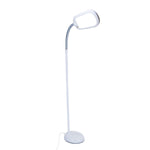
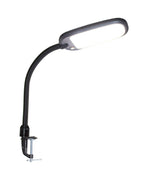





























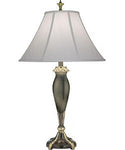


















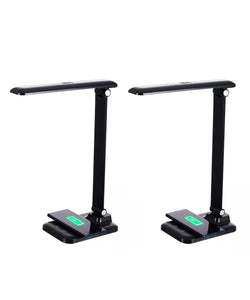
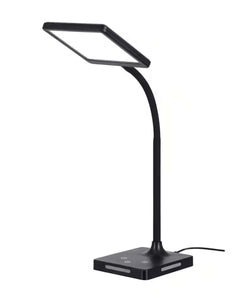




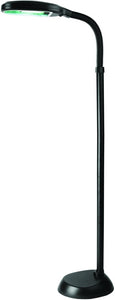





Comments